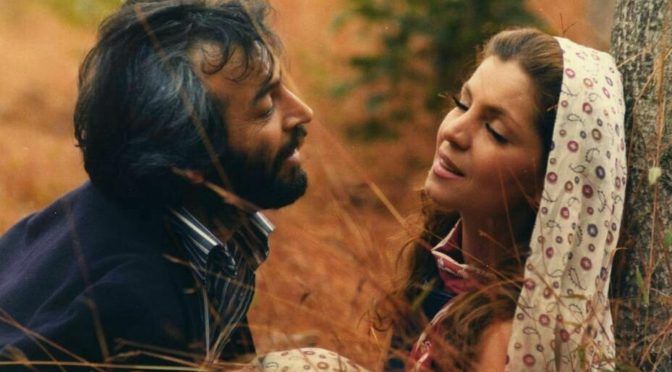Now that cinema is well past its centenary, one of the joys of watching old films is the glimpse it gives you into a long-gone past. Old movies can be like a moving archaeology – revealing a world of clothes, social habits, manners and norms that otherwise are consigned to the history books. Cinema even in its most lighthearted and facile mode can often reveal deeper truths about the past than might appear on the celluloid surface.
Ehsan Khoshbakht’s documentary is a fine example of using popular film to explore social tectonics. None were higher on the political Richter scale than in the Iranian revolution that threw out the old Western-leaning Shah in the late 1970s. Filmfarsi, he tells us as invisible narrator, was a pejorative term given to the explosion of Iranian cinema after the bloody coup in 1953. A repressed population was rapidly exposed to new cinemas and an avalanche of home-made, often very cheaply produced films. Such was the appetite for films in Farsi that all expense was spared in churning out a consistent diet of cheap comedies and wild melodramas.
Khoshbakht allows us many glimpses into a domestic cinema which vanished with the revolution. The revolutionary guards took their revenge on the decadence of filmfarsi’s song and dance, sexual innuendo films by destroying the footage and burning down the cinemas. Khoshbakht’s documentary begins in fact with torching of a picture house in South East Iran in which 377 men, women and children were killed. They were watching one of the few filmfarsi films that Khoshbakht really admired, ‘The Deer’ directed by Masoud Kimiai. That director had started moving away from the formulaic to something deeper and well constructed.
One may ask how Khoshbakht was able to show is clips from that era if the Ayatollah’s men threw them on the bonfire. The answer is that even in the most repressive years, there was a lively trade in underground VHS tapes of the films. As a young man, these were meat and drink to the fledgling director. One of the great strengths of the film is his analysis of the movies – behind the dross, he claims, were clues to the seeds of the Shah’s overthrow. Look very carefully, he urges, and see what lies beneath the surface. It’s a fascinating dig.

